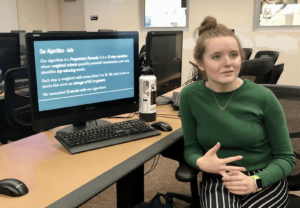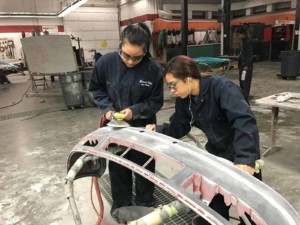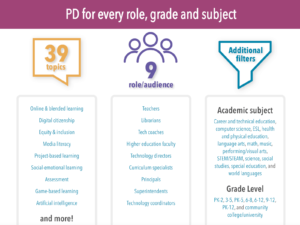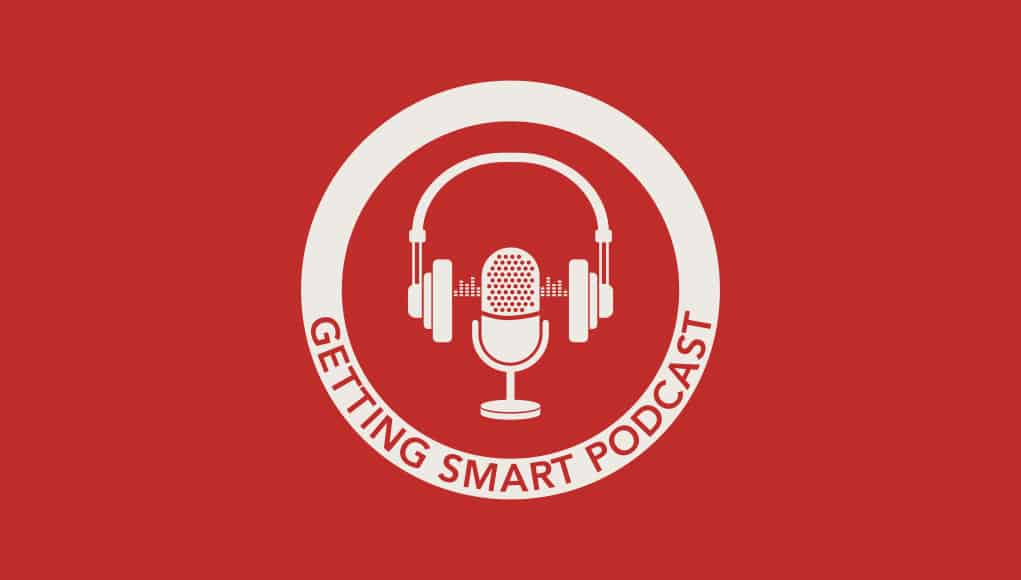Why Students Should Co-author Learning
[…] journey; they are empowered agents, continually invited and habituated to voice their Whole Learner needs and preferences and their interests and passions so that educators can adapt instruction to them.” This progressive image of students co-designing their education as outlined in An American Imperative: A New Vision of Public Schools, a new report from […]
Punk Rock Classrooms Brings Passion, Unity & Do-It-Yourself Mindset To Education
[…] solve the problems and giving them ways to pursue their own ideas.” Much of what PRC promotes aligns well with those interested in more project-based, deeper learning instruction. The concepts of student voice, relevant and engaging work, as well as taking risks is all part of a learning culture that Earnshaw says needs to […]
Back In Person at the Model Schools Conference
[…] “how-to” sessions, focused on the networking idea lab, sessions presented on equity, rigor, engaging students in active participation, how to amplify class culture, stories of resilience, AI-driven instruction, and how to start the year strong. The variety of sessions and scheduling enabled you to really customize your MSC experience and select focus areas and […]
Five Steps to Embed Growth Mindset Practices into Learning Culture
[…] are validated and affirmed, they are more likely to feel seen, valued for their contributions, and ready to learn. When learner ideas are at the center of instruction, teachers signal that they respect and value students’ thinking. 2. The Brain and How Learning Works Learners need to learn about the brain and how it […]
ISTE LIVE 21 Virtual Conference Recap
[…] the ISTE platform. Jaime had fun drawing on me but it really was a unique way to present and to think about different ways we can provide instruction for our students and connect with other educators. Screenshot of our session recording and how it looked in Mozilla Hubs It was a great learning experience […]
Analyzing Data: Helping Students Build Digital Literacy Skills
[…] with a specific color or emoji, which helps them to better understand the data. There are also interactive tools available for teachers to better support students during instruction as they develop a deeper understanding of data concepts, and identify patterns that exist within the data. GatherIQ As a Spanish teacher, beyond the language skills […]
Building Community and Social-Emotional Learning in the New School Year
[…] that has taken place over the summer. Thinking back to this time last year, we were facing so many unknowns when it came to what our classroom instruction might look like throughout the year. Would we spend the year teaching virtually or hybrid? Or would our schools not be as affected and would we […]
Knowing Students Deeply is the Most Important Thing We Can Do
[…] a jazz riff on the guitar. We knew inequities existed in education, but the pandemic made the unfairness undeniable. Think of who had access to high-speed internet and quality instruction time and who didn’t? Whose schools opened their doors to students safely and whose couldn’t? Whose communities suffered the highest proportion of Covid-19 infections and deaths […]
Bridging The Equity Gap – Are Innovation and Technology The Equalizer or The Divider?
By: Anne Olderog As many schools return to in-person instruction this fall, they may be walking the same halls – only to find education itself changed forever. As schools and local governments grapple with the best, CDC-recommended learning structure (in-person vs. hybrid vs. remote), instructors try new engagement methods, and learners emerge from the […]
In Memory of Dr. Roger Weissberg (Podcast Repost)
[…] CASEL framework, there is still not a consistent lexicon for non-academic skills and dispositions and even less progress around how to measure growth; No consistent home for instruction (i.e., no courses or dedicated time) and no dedicated spending patterns; and Idiosyncratic initiation (new leadership, discipline problem, employer feedback). To address these challenges, Weissberg helped […]









